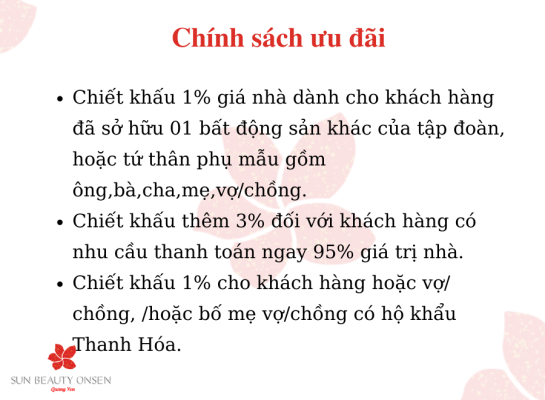- Shifting Realities: Social Media Surpasses Traditional Sources as 78% Rely on It for news today, Forcing a Rethink of Journalisms Future.
- The Rise of Social Media as a News Hub
- The Challenges of Verifying Information Online
- The Role of Algorithms and Echo Chambers
- Impact on Traditional Journalism
- Adapting to the Digital Landscape
- The Future of News Consumption
Shifting Realities: Social Media Surpasses Traditional Sources as 78% Rely on It for news today, Forcing a Rethink of Journalisms Future.
The way people get their information is changing dramatically. For years, traditional media outlets like television, newspapers, and radio were the primary sources for what was happening in the world. However, a significant shift has occurred, with social media platforms rapidly becoming the dominant force in news consumption. Recent data indicates that a staggering 78% of individuals now rely on social media to stay informed about current events, a clear indication of a paradigm shift in how news today is disseminated and received. This transformation presents both opportunities and challenges for the future of journalism.
This reliance on social media as a news today source isn’t simply about convenience; it’s about accessibility and the personalized nature of information feeds. Algorithms curate content based on user preferences, creating echo chambers where individuals are often exposed to information aligning with their existing beliefs. While this can reinforce existing opinions, it also raises concerns about the spread of misinformation and the erosion of trust in traditional journalistic standards. The speed at which information travels on these networks also intensifies these issues.
The Rise of Social Media as a News Hub
Social media’s ascendancy as a news source is fueled by several factors. Firstly, platforms like Facebook, X (formerly Twitter), Instagram, and TikTok offer instant access to information, often breaking news stories before traditional media can report them. Secondly, they provide a space for direct engagement with news providers and other consumers, fostering a sense of community and shared experience. This interactive element is something traditional media often struggles to replicate. Furthermore, the accessibility through mobile devices means people can receive updates wherever they are, pushing the envelope of what is considered “real-time” reporting.
| 40% | |
| X (formerly Twitter) | 30% |
| 20% | |
| TikTok | 10% |
The Challenges of Verifying Information Online
One of the most significant challenges posed by the dominance of social media in news consumption is the difficulty of verifying information. Unlike traditional news organizations, which adhere to strict journalistic standards and employ fact-checkers, social media platforms are often rife with misinformation, disinformation, and “fake news”. This can have serious consequences, leading to public confusion, political polarization, and even real-world harm. Furthermore, the algorithms driving these platforms often prioritize engagement over accuracy, meaning sensationalist or emotionally charged content is more likely to be seen. This inherent system promotes spreading things without validation.
The Role of Algorithms and Echo Chambers
The algorithms employed by social media platforms aren’t neutral arbiters of information; they are designed to maximize user engagement. As such, they prioritize content that is likely to elicit a reaction, regardless of its accuracy. This often leads to the creation of “echo chambers,” where individuals are primarily exposed to information that confirms their existing beliefs. Within these echo chambers, dissenting voices are often silenced or dismissed, and misinformation can spread rapidly without challenge. The result is a fragmented information landscape where people increasingly inhabit different realities, fueled by divergent narratives. This creates a very toxic atmosphere, leading to an increase of conflicts, bad decisions based on fake information and further distrust in core institutions like government.
Combating this requires a multi-pronged approach, including media literacy education, the development of more robust fact-checking mechanisms, and greater transparency from social media companies regarding their algorithms. Users also have a responsibility to critically evaluate the information they encounter online and to seek out diverse perspectives. Promoting critical thinking skills is crucial for navigating the digital age and fostering an informed citizenry.
Impact on Traditional Journalism
The shift towards social media as the primary news source is having a profound impact on traditional journalism. Declining readership and advertising revenue have forced many news organizations to downsize or even close their doors. Journalists are facing increasing pressure to compete with the speed and reach of social media, often sacrificing in-depth reporting for quick hits and sensationalism. This creates a vicious cycle where the quality of journalism declines, further eroding public trust in traditional media. The economic models supporting journalism are being fundamentally disrupted.
- Funding models are changing, shifting away from advertising revenue.
- Journalists must adapt to new mediums and skills.
- Maintaining journalistic ethics in a fast-paced digital environment is key.
- Combating misinformation and disinformation is now a central task.
Adapting to the Digital Landscape
To survive and thrive in the digital age, traditional journalism must adapt. This includes embracing new technologies, experimenting with different revenue models (such as subscriptions and donations), and focusing on in-depth, investigative reporting that sets them apart from the noise of social media. News organizations need to find ways to build direct relationships with their audiences, fostering a sense of community and loyalty. Collaboration between news organizations and social media platforms can also be beneficial, provided that it doesn’t compromise journalistic independence. Transparency and accountability are more important than ever.
The core values of journalism – accuracy, fairness, and independence – remain essential. However, these values must be actively defended and upheld in the face of new challenges. Journalism needs to focus on building trust with the public, which could be done by offering a product that has higher quality than the available online content.
The Future of News Consumption
The future of news today consumption is likely to be characterized by an even greater fragmentation of the information landscape. As new social media platforms emerge and existing ones evolve, it will become increasingly difficult to predict where people will get their information. The rise of artificial intelligence (AI) is also likely to play a significant role, with AI-powered chatbots and virtual assistants potentially becoming important sources of news and information. This raises new ethical concerns about the potential for AI to be used to manipulate public opinion and spread misinformation. Streamlining the reach of information and allowing algorithms to control the core of information is dangerous.
- Increased personalization of news feeds through AI.
- The emergence of new social media platforms catering to niche audiences.
- Greater reliance on visual content, such as videos and infographics.
- The growing importance of fact-checking and media literacy education.
Navigating this new landscape will require a commitment to critical thinking, media literacy, and a willingness to seek out diverse perspectives. It will also require a collective effort from journalists, social media companies, and policymakers to ensure that the public has access to accurate, reliable information.



























